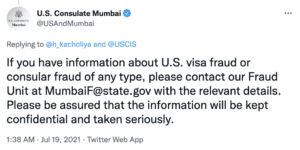America Is a Country, Not a Labor Market
A recent Wall Street Journal opinion piece by Dutch professor Hein de Haas on why America needs to allow in many more unskilled immigrants is filled with the usual talking points about “labor shortages” and the like. But what is so striking about De Haas’s arguments is that in a full-page, 1,700-word essay he never even hints at any possible counter-arguments to his assertions, even if only to dismiss them. He also appears to be entirely unaware of the disadvantages of allowing in large numbers of people who have relatively little education.
Let me start with his contention that we have tried to control the border, but to no avail. His evidence for this is the $25 billion spent annually on what he calls “border enforcement.” It is not entirely clear to what he is referring, but it is true that the budget for U.S. Customs and Border Protection is about $20 billion in fiscal year 2024. But, as the agency’s name makes clear, much of what Customs and Border Protection does is related to overseeing imports and exports. Seizing counterfeit handbags or collecting tariffs is certainly useful work, but it has little to do with immigration enforcement.
De Haas correctly acknowledges that American politicians have been unwilling to stop illegal immigrants “where it matters most,” which is at the workplace. Just a handful of businesses are fined each year for knowingly hiring illegal immigrants. But that is only part of the problem. Prospective illegal immigrants have known for decades that once they make it past the border, or overstay a temporary visa, they are pretty much scot-free. Currently there are an estimated 1.9 million illegal immigrants in the country who have been given a final order of removal by an immigration judge but never were made to actually leave. Local governments routinely release illegal immigrants from jail even after Immigration and Customs Enforcement requests a detainer. Many states provide illegal immigrants with everything from driver’s licenses and in-state college tuition to welfare and free health care.
In making his case that border enforcement does not work, De Haas cites data collected since 1982 by Douglas Massey of Princeton, who purports to show that fortifying the border made it harder to go back and forth, causing more illegal immigrants to settle permanently in the United States. There is some evidence that Mexican migration became less circular over time, and increased border enforcement in the 1980s may have played a role in that trend. However, this happened only in the context of a complete lack of interior enforcement.
…
[Read the rest at National Review]






